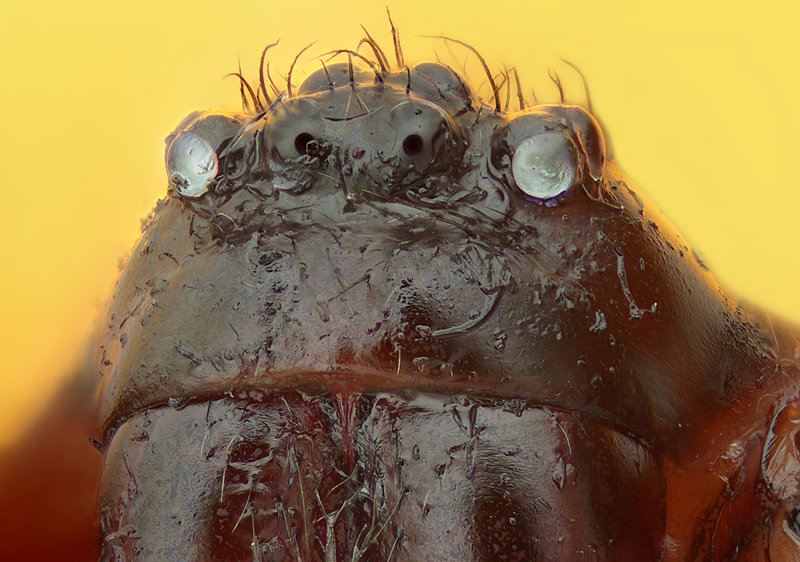delgado wrote:Perhaps this is a silly question - in this situation, is it possible to diffuse incoming light too much? This is one of the better results but I have noticed a lot of my tests have suffered from a lack of contrast
There are a couple of things that can go wrong here.
Contrast can easily be cut by stray light bouncing around inside the lens and camera. This problem is sometimes made worse by adding diffusion, when the added diffusion causes more light to enter the lens from outside the subject field. To defend against this problem, remove the camera from your lens and extensions and look inside by eye while pointing the lens at a large bright field. Ideally you will see only light coming straight through the lens, but it's very common to see reflections from the sides of extension tubes and adapters. Those reflections must be flocked or masked or the scattered light will cut your contrast. Shading the lens can also help a lot.
In addition, contrast can be cut by adding diffusion if the added diffusion results in more glare bouncing off the surface of the subject. (Think about looking into a pool of water on an overcast day, versus the same pool on a bright sunny day with the sun behind you. You'll see a lot less subsurface detail on the overcast day, when there's a lot of light bouncing off the surface into your eyes.)
Otherwise the issue depends on whether contrast in your subject arises from pigmentation or shadowing. If it's from pigmentation, then adding diffusion will not cut contrast (except for the effects noted above). But if it's shadowing, then more diffusion will brighten the shadows and cut contrast that way.
About the "impressionist" appearance of the soft hairs, I agree that those appear to be slightly out of focus. Shooting a deeper stack will get more in focus. Sometimes a deeper stack will introduce other problems, but if you have the additional frames, you can always decide to not use them.
By the way, it's common for background hairs to lose contrast when they are near the edge of a foreground structure, particularly if the foreground structure is light in tone. This happens because when the hairs are focused, they are also partly occluded by out-of-focus foreground. Light from the OOF foreground gets added to whatever is coming from the in-focus hair, and if the hair is dark, the OOF foreground contribution can cut the contrast by quite a lot.
--Rik

